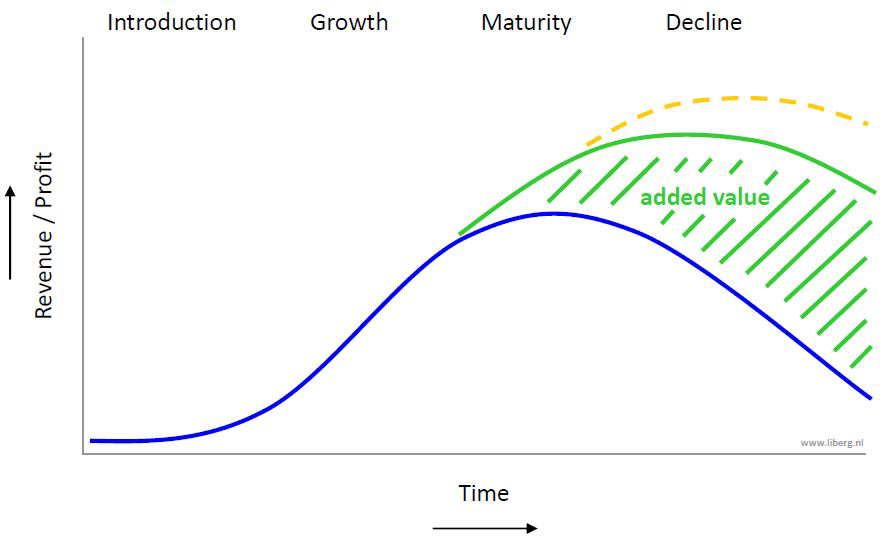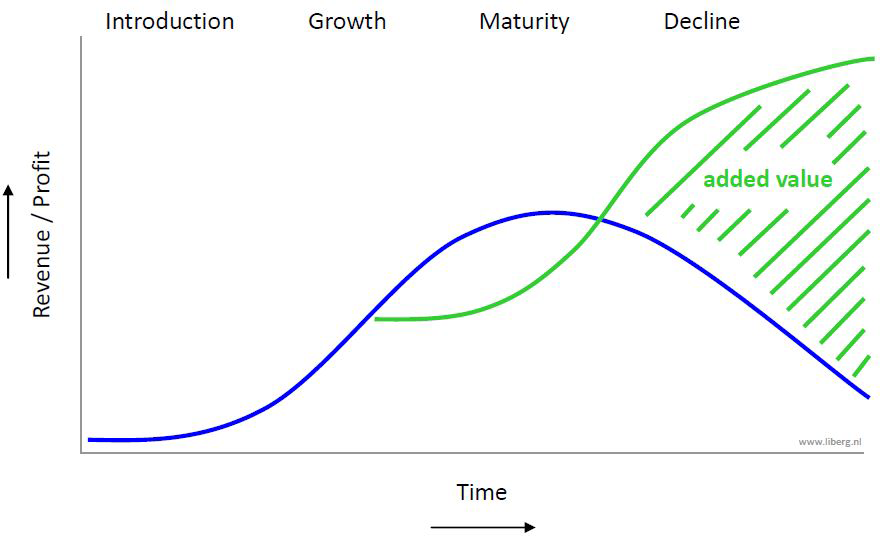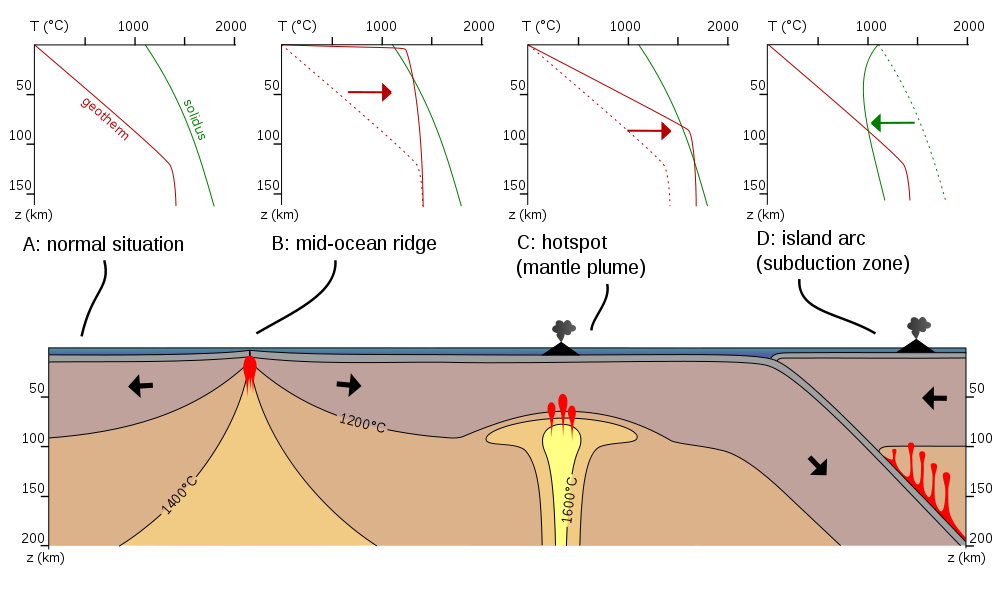Promising Hotspots for Business Development (part one: introduction)
Ewoud Liberg, September 1st 2015
How often do you read in the media that organizations get into trouble because their products or services are outdated? As everyone knows, moving along with market and technological developments is crucial for lasting customer preference and competitive advantage, yet there are organizations who (all too) suddenly realize the need for a fundamental change in their products or services. They see that disappointing results cannot be overcome by stretching their marketing budget. Their future must be secured by means of thorough renovation or innovation. Times of optimizing and tweaking are history.
People often ask me how I know when renovation or innovation of products and services are imminent for an organization. Are there indicators that can be used to pinpoint the right moment? I also get asked about the circumstances under which business development can be applied successfully. A short answer to these questions is difficult, which is why I am writing these four articles. I will also share with you the model I use with my clients to answer these questions. This may be a handy tool to have in your ‘consultancy toolbox’. The central question of these four articles…
“How can you determine
whether your organization
needs business development
at this point in time, and is ready
to deliver appreciated results?”
Part one is a brief exploration of the topic and discusses the hotspot itself. What is it and why is it relevant? Part two is about locating a hotspot: “how can you find out whether your company is situated right on top of a hotspot or maybe a hotspot is being formed under its base?” The next question is if it is likely to expect that your organization can take advantage of the chances bubbling up from the hotspot. This interesting question is my topic in part three. In the fourth and final part I will reveal the model you can use to determine whether your organization need business development at this point in time, and is ready to deliver appreciated results.
I created this model from my own experience and use it to establish to what extent the hotspot is appealing to my client. Should my client invest time and money in exploring this hotspot and expect profitable and future-proof new products and services? Moreover, I use this model to predict to what extent I can achieve appreciated results myself, before I start a new challenge.
“By publishing these articles I
want to encourage business
developers working within
various organizations to test
the model. This enables
shared experiences,
improvement of the model,
and perhaps demonstrate
its effectiveness.”
Incremental Innovation
Existing products and services are changed to make them more attractive to the businesses and customers. An example of incremental innovation is adding WiFi to a digital camera so pictures can be displayed and transferred wirelessly. Innovations delivered by a business developer often go beyond incremental innovation. They are combined with changes in adjoining aspects such as the business model, distribution channel, or a new target group.
“Incremental innovation extends the
product life cycle.”
Radical Innovation
At a certain point in time it is not realistic to expect that modifications in existing products or services will result in an extended product life cycle. Incremental innovation is no longer profitable. This is always caused by major underlying forces, such as new technologies, changes in society or government regulation, or in combination with each other. The existing product has reached the end of its lifecycle.
A clear example is the emergence of LED lighting. New technology was the driving force behind it; society wants a sustainable world and in 2009 our government even banned Thomas Edison’s traditional light bulb.
Stable Market Conditions
A business developer’s role is to design new products and services and thoroughly renew obsolete ones. I call this Innovation and Renovation. This work usually occurs in unstable markets due to more profitable opportunities for change. If you see a business developer working under stable market conditions, then it’s probably a business developer of a different order. This business developer is a ‘lead generator’, a ‘deal closer’ or a ‘new-markets-conqueror-with-an-existing-product’. The business developer I am writing about is sometimes confused with this sales professional. He or she designs new sales strategies and executes them in order to develop an existing product or service in current or new markets.
Confusion arises because product modification is often needed for an existing product to enter a new market. Think about developing a new and simplified cell phone design for elderly people. A change in product is necessary to fit the need of a new audience. In this case the sales strategy is the cause and product modification is the effect.
Unstable Market Conditions
A business developer prefers to work under unstable market conditions. This is the case where supply no longer meets the value that audiences are seeking, a situation that will lead to a new equilibrium for all market players including new entrants. For example, a video store owner may realize that he really needs to think of something different when his customers start downloading movies, watch movies streaming, or on-demand. He probably saw the signals and ‘felt’ it coming. The question now is not if, but how long he will survive without fundamental changes. With today’s knowledge this hotspot is very obvious for everyone. If this were you, would you see it coming? And when? Five years ago? Maybe ten or fifteen years ago?
“A hotspot is a place in the
market where fundamental
changes are taking place
that will lead to obsolete
products, services,
and business models.”
Hotspots
The term hotspot is rooted in volcanology. Bubbling up lava and volcanic eruption is caused by various underlying fundamental forces. It is impossible to interfere with these underlying forces and the result has major impact.
Before a volcano erupts there are always noticeable signals in advance. The problem however is that these signals never contain reliable predictive value with respect to the moment when the actual eruption occurs. Can you see an analogy with business development? You feel different fundamental forces in the market, you know this will lead to a drastic change, but you do not know exactly when to start to think of something else or to invent something new. Reliable data is not available, and for this reason it can be extremely hard to convince the mayor and the city council to allocate resources and take action.
Some hope the storm will blow over and sometimes this happens, albeit temporarily. Others take action and strengthen their market position and prepare their company for the future.
Used source: Volcanology images found on Wikipedia.
All articles in this series:
- Promising Hotspots for Business Development
(part one: introduction) - How to Find Promising Hotspots for Business Development
(part two: the clues) - When to Engage in Promising Hotspots for Business Development
(part three: the enablers) - How to Model Hotspots for Business Development
(part four: the finish)
If you’re thinking about renovating or innovating your products or services, and would like insight, guidance, or help, I’d love to chat with you.
- Check out my references and view my previous work
- Connect with me on LinkedIn





